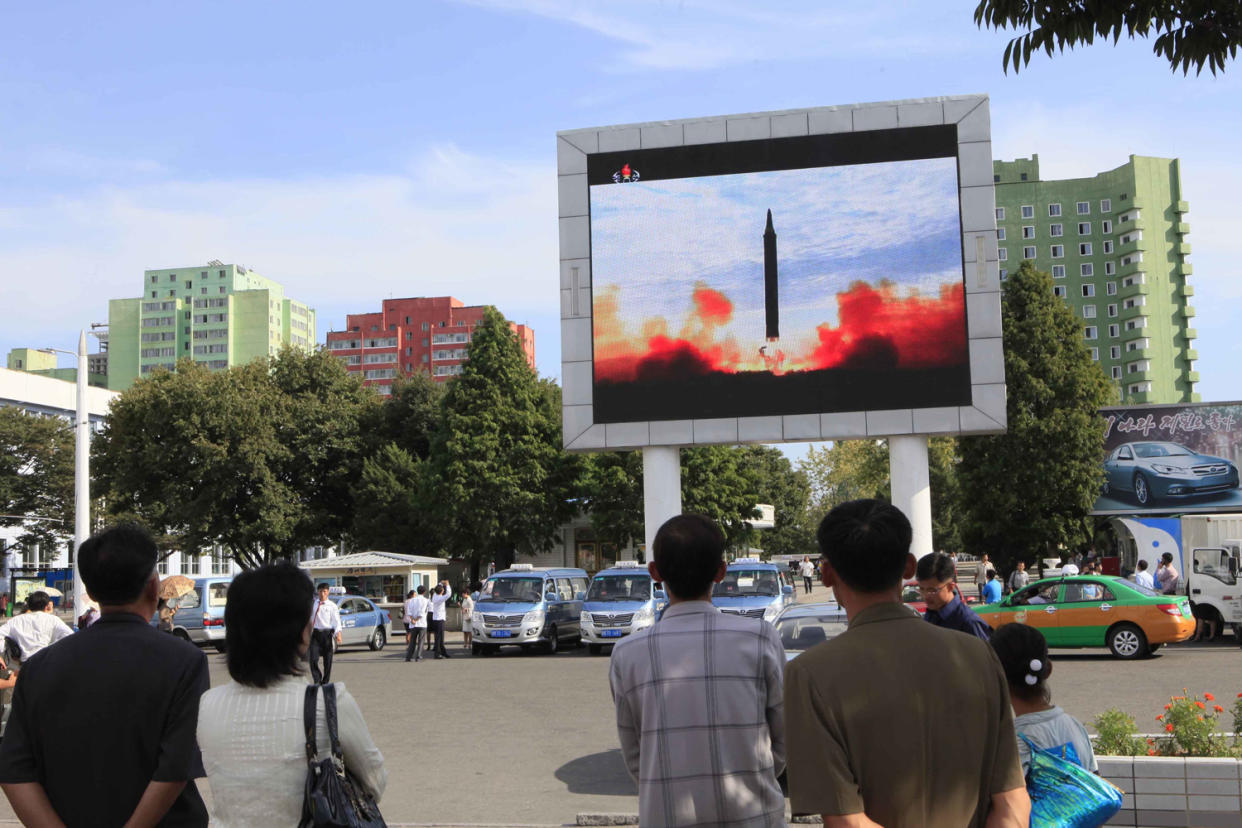Armageddon and Paranoia: The Nuclear Confrontation 1945-2016 by Rodric Braithwaite - review

Threats of war on the Korean peninsular have escalated this autumn, with Donald Trump telling a stunned audience of UN diplomats of his threat to destroy not just “Rocket Man” Kim Jong-un but North Korea. He was reading from an autocue, so it wasn’t a case of ad-libbing. This crisis makes former ambassador Rodric Braithwaite’s fine account of the development, deployment and control of nuclear weapons highly urgent.
The essential story of the bomb’s genesis is well known. The wartime US had the vast industrial base and scientific expertise to develop the bomb first. The only two bombs used in war were of the fission type, the Hiroshima bomb involved enriched uranium, the Nagasaki follow-up relied on plutonium. “Little Boy” exploded above Hiroshima with the force of 15,000 tons of TNT; “Fat Man”, which was two miles off target, between 18-23,000 tons.
In a parallel programme, US scientists, led by the abrasive Edward Teller, also worked on fusion bombs, which are hydrogen or thermonuclear weapons. The force of these is measured in megatons rather than kilotons. That means one million tons of TNT. The largest such device ever tested was the Soviet “Tsar Bomba” in 1961, a 50-megaton weapon. The then head of the NKVD miscalculated the explosion’s radius and died from radiation exposure a few years later.
Stalin had reacted nonchalantly when, at Potsdam, President Truman shared the news of a successful test in the New Mexico desert: “Glad to hear it,” he said. In reality, spies within the Manhattan Project had kept the Soviets apprised of the major engineering and scientific developments and, despite the parlous state of Russia’s economy, a dictatorship could organise a crash nuclear programme, successfully testing a Soviet device as early as 1949. For a decade or so the two big nuclear powers were unevenly matched. The US elaborated an effective nuclear triad of land-based, bomber and submarine delivery systems. U2 spy planes and then satellites eventually enabled the Americans to gain an accurate picture of Soviet installations.
Since the Russians were incapable of reliably putting bombs on planes or in submarines it was not until the late Fifties that they developed long-range missiles capable of hitting the continental US. Various bomber or missile “gaps” with the Soviets proved erroneous, though not before they had resulted in huge increases in the number of these armaments. Arsenals mushroomed, so to speak, and would be capable of devastating the entire northern hemisphere, with 30-40,000 warheads on each side. Fortunately, perhaps, experts elaborated complex nuclear doctrines, of which “mutually assured destruction” is the most famous.
We may laugh at the composite character of Dr Strangelove played by Peter Sellers in the eponymous Kubrick movie, but leaving aside the chilling calculation of “megadeaths”, technocrats pondered how to use nuclear weapons in a calibrated fashion, hitting military rather than civilian targets so as to leave space for negotiation before Armageddon commenced.
It was decided never to leave these decisions to computers, for reasons that become clear from Braithwaite’s account of bombers mysteriously crashing or massed incoming missile attacks showing up on radars after training tapes were mistakenly loaded. A few lost bombs still lie dormant, deep in the sea or in North Carolina swamps.
The book has a few instances of nuclear heroism, where brave commanders declined to unleash hell based on faulty communications or intelligence. Braithwaite’s key theme is that intelligence is not good at reading an adversary’s assumptions and intentions — Ronald Reagan finally grasped this point after watching an ABC documentary which led him to reflect on Russian fears of surprise attack. This was evident from the 1983 Able Archer Nato exercises, which Moscow initially imagined to be a sneak first strike. It would have been useful to know about Putin’s nuclear doctrine, not to mention command and control systems to prevent Trump running amok late at night.
As Braithwaite explains very well, the capacity to put yourself inside the mind of someone like Kim Jong-un is of supreme importance, as is the ability to persuade others to apply pressure on him, for which they will need something in return. Bluster about destroying a country is no substitute for cool diplomacy. Braithwaite’s book reminds us of that.
£20.29, Amazon, Buy it now

 Yahoo News
Yahoo News 
